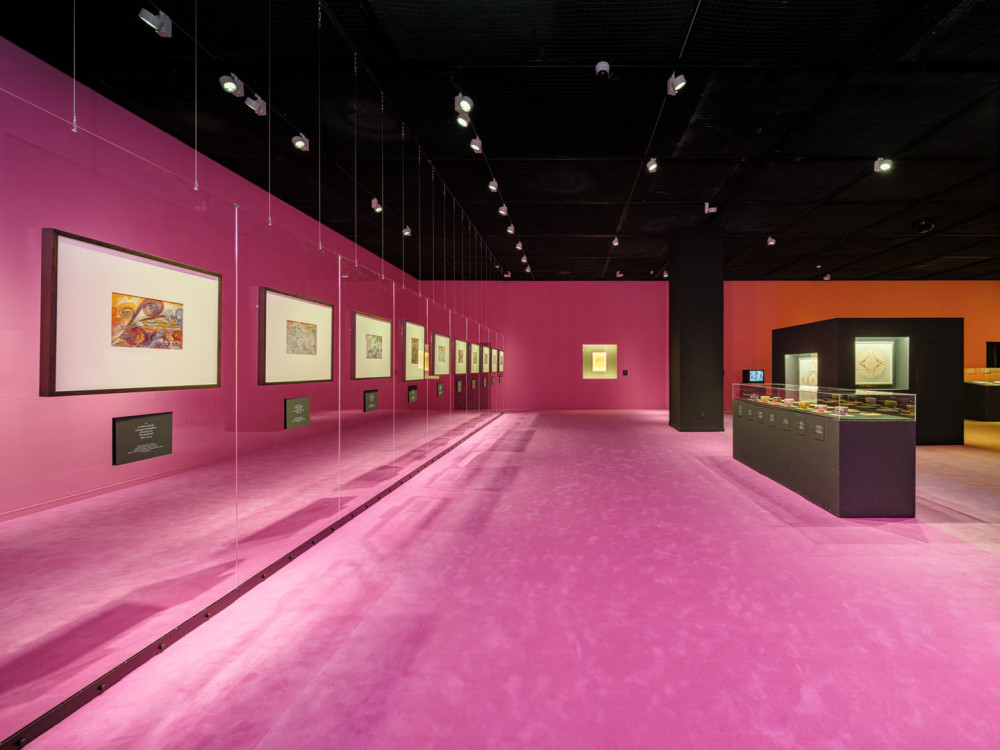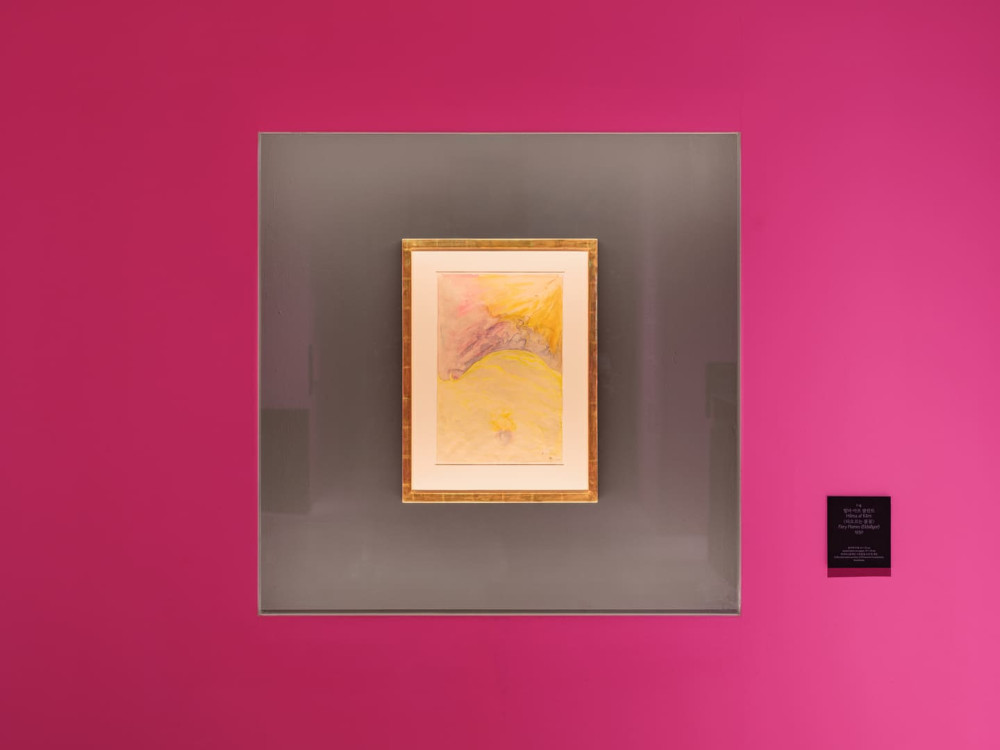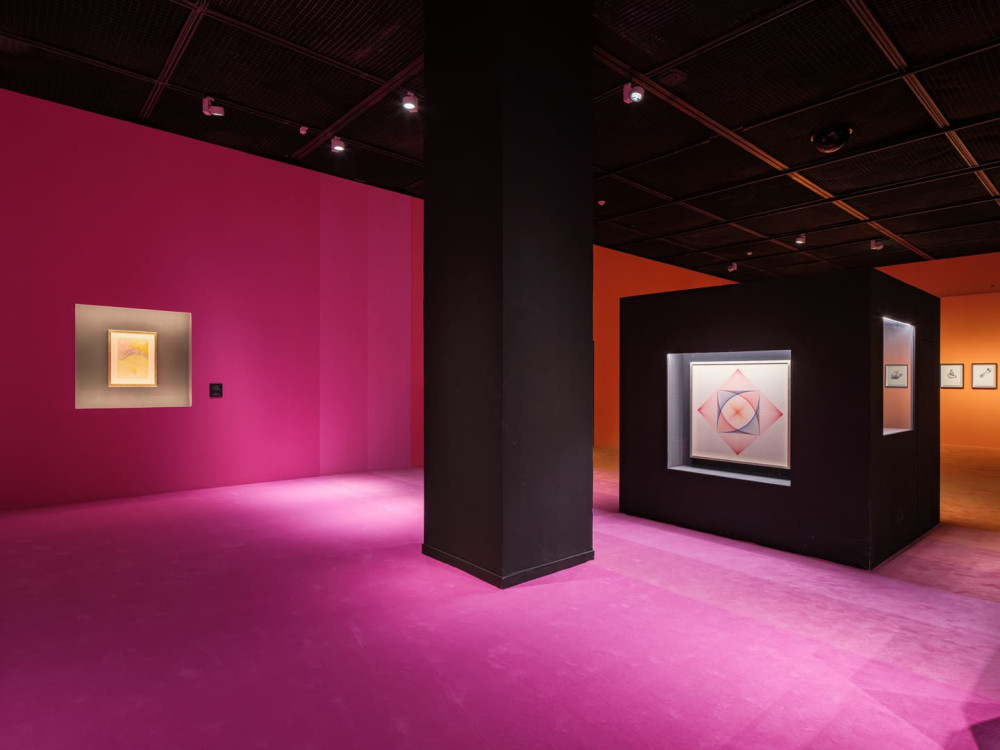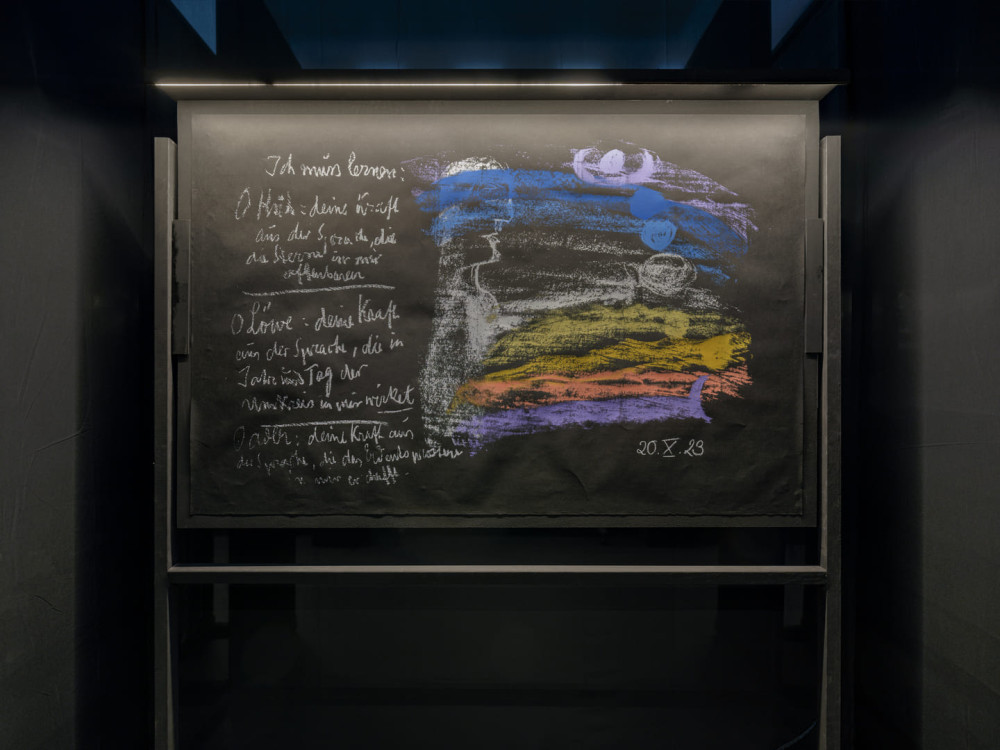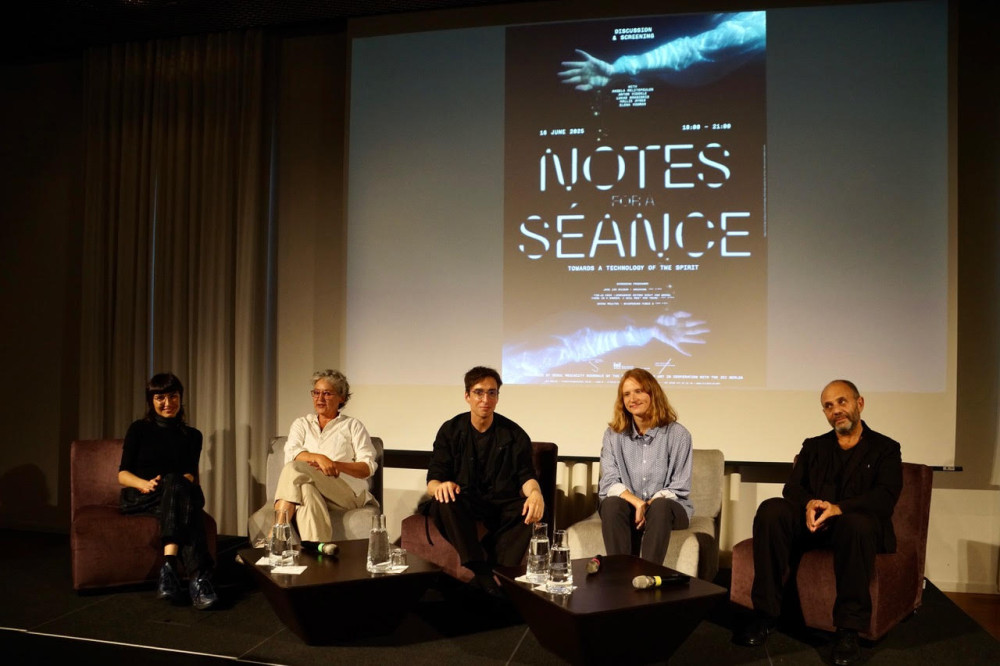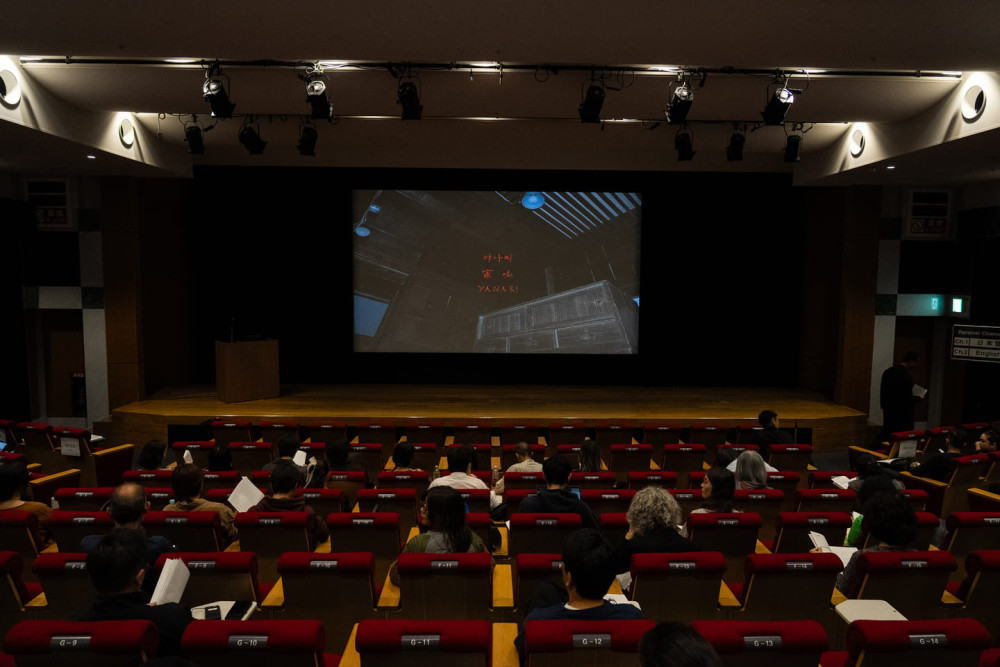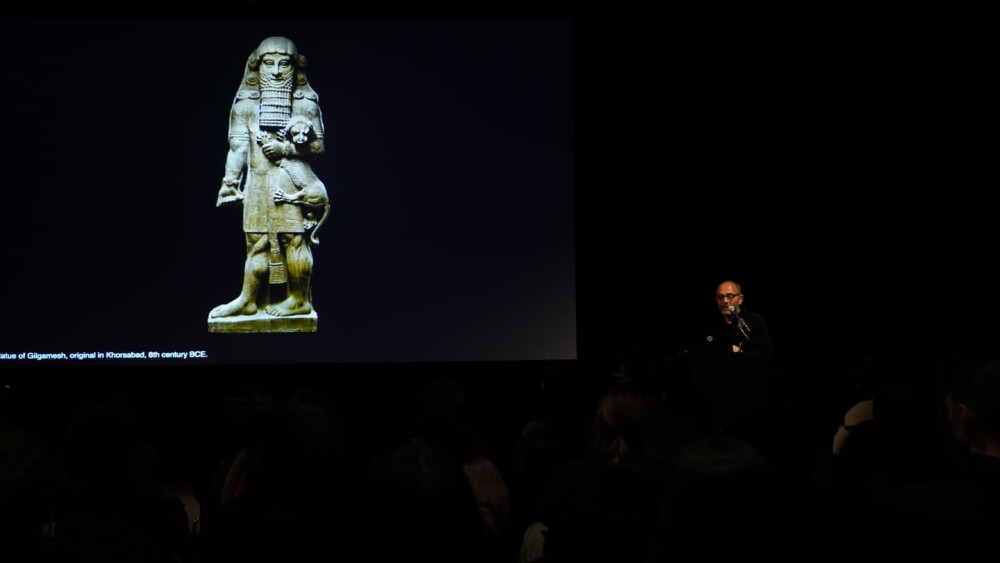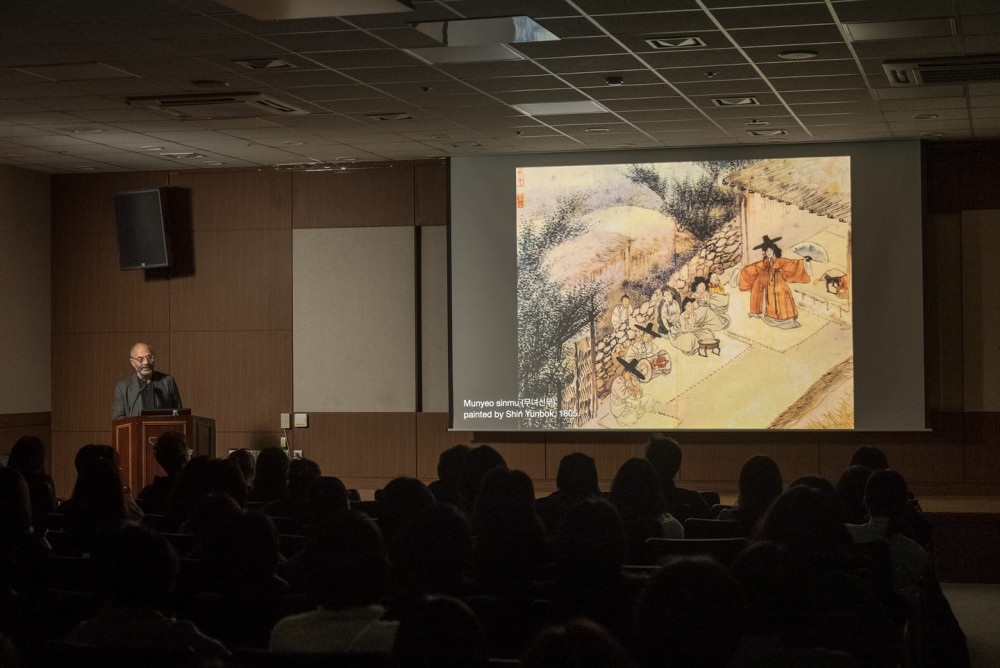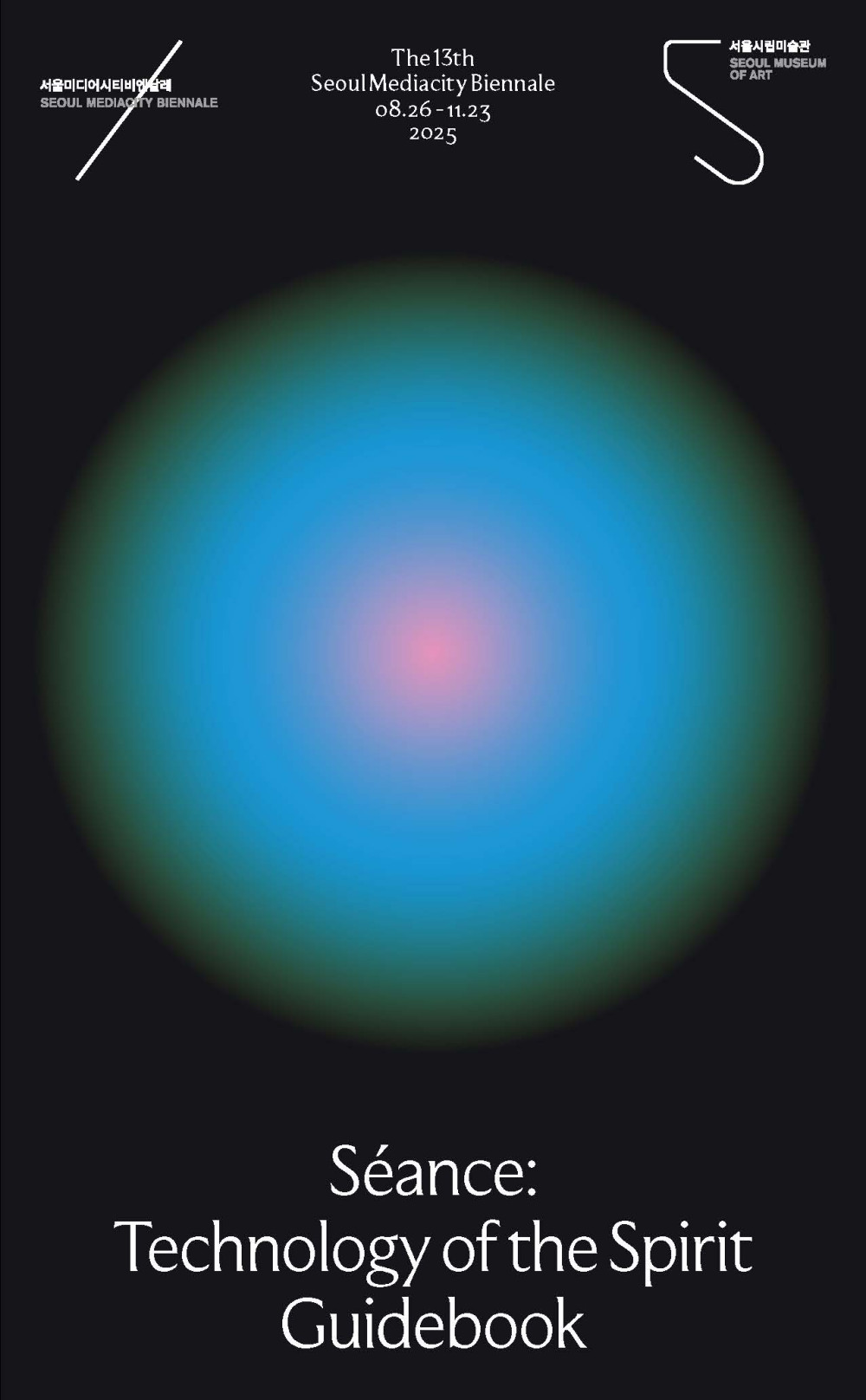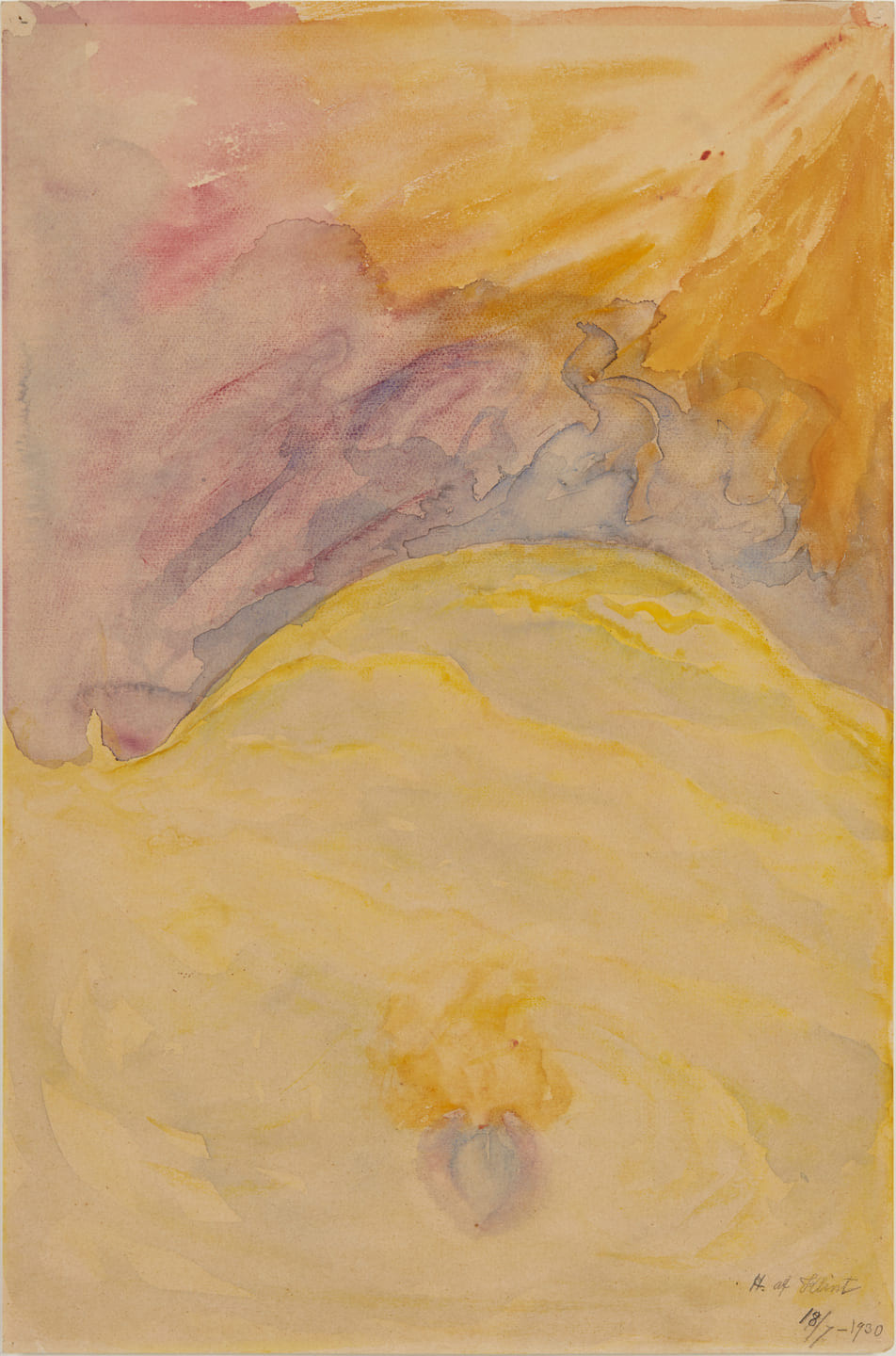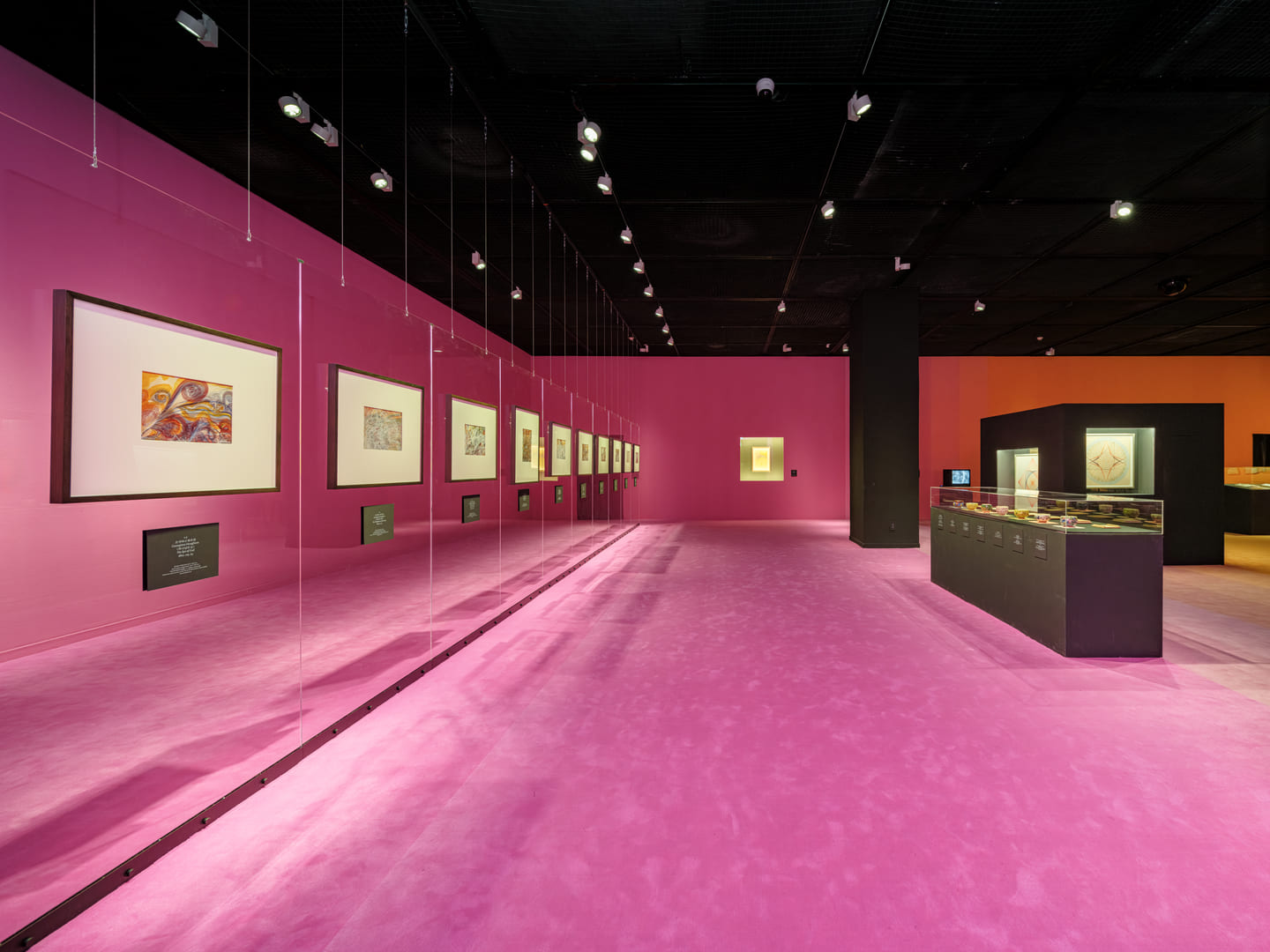
In 1920, five years after completing the monumental cycle of abstract paintings that would secure her place in history, Hilma af Klint (1862-1944) visited the headquarters of the Anthroposophical Society in Dornach. She would spend long periods at the Goetheanum over the next decade, regularly attending lectures by the society’s founder Rudolf Steiner (whose death in 1925 coincides with the beginning of a five-year period from which no work by af Klint survives).
Her time at the center, and notably her study of Goethe’s Theory of Colors as part of Steiner’s lecture series on the nature of color, precipitated a change in the artist’s approach. Beginning in 1922, af Klint adopted the “wet-on-wet” watercolor technique developed by Steiner and his circle, in which the intermingling of colors gives rise to spectral forms and landscapes that might serve as aids to spiritual contemplation.
Executed in July 1930, this semi-abstract work is unique in af Klint’s oeuvre. Emerging from the overlapping haloes of color is the suggestion of a burning heart at the base of a sun-blessed mountain. One of two watercolors gifted by af Klint to sisters Elsa and Magda Jerud, textile artists who were also members of the Anthroposophical Society, this painting can be read as both an oblique self-portrait and a representation of the experience of revelation.
